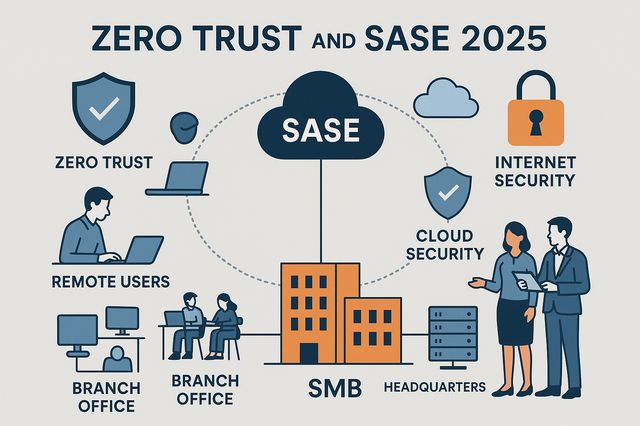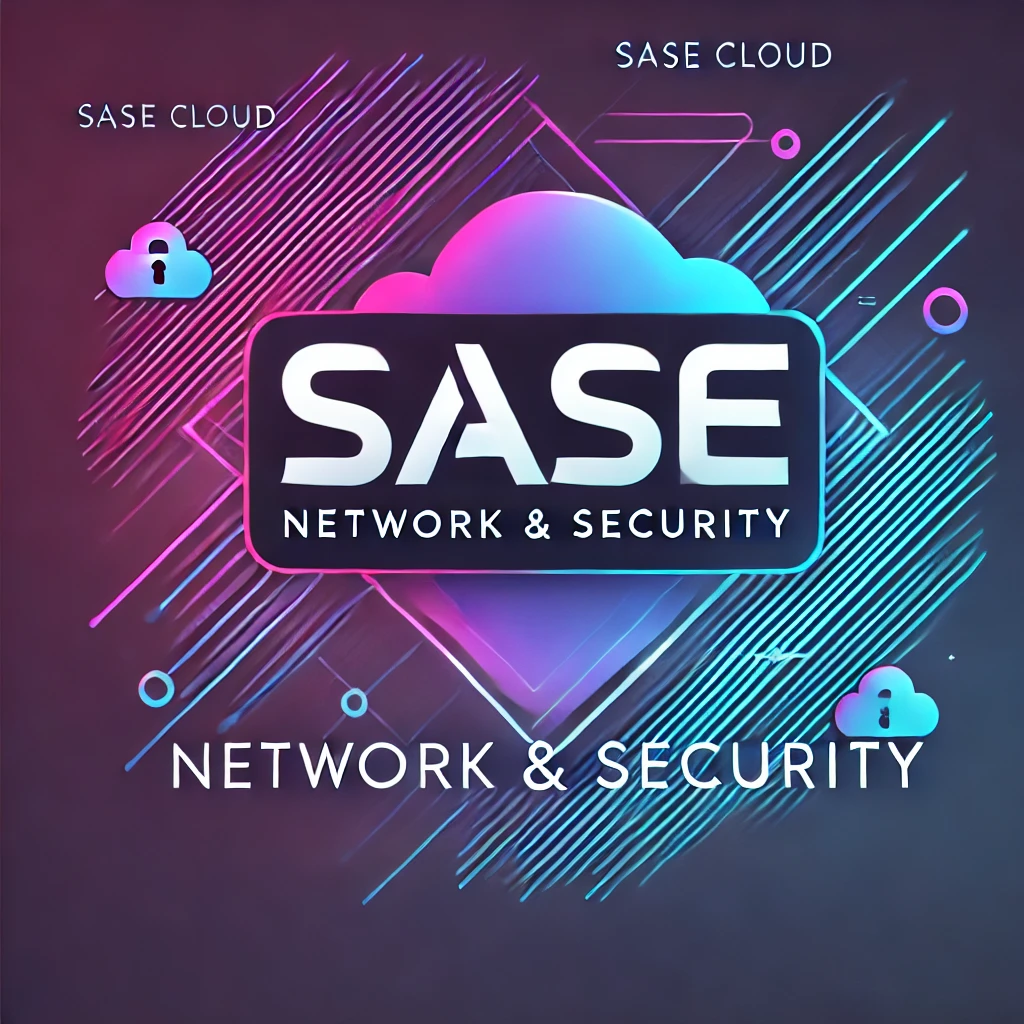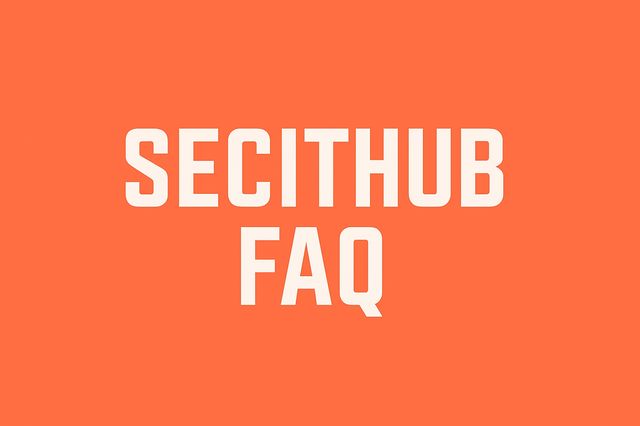Secure Access Service Edge is a cloud-native architecture that unifies networking and cybersecurity into a single platform. It delivers Zero Trust protection, fast connectivity, and policy consistency for users, devices, and data across all locations and clouds.

Introduction
In 2025, the network perimeter no longer exists.
Users connect from anywhere, data flows across multiple clouds, and traditional firewalls can’t define the edge of trust.
Organizations face one fundamental question:
How can we stay secure, connected, and compliant without slowing down the business?
The Origin of SASE
Fragmentation and Complexity
Before SASE, enterprises managed dozens of point solutions branch firewalls, VPN servers, web filters, and endpoint agents.
Each tool required its own console and policies.
Security and networking teams worked in silos, creating inconsistent enforcement and higher risk.
When remote work exploded during the pandemic, these inefficiencies became critical vulnerabilities.
The SASE Response
SASE consolidates all these controls into a single, cloud-native security fabric.
Instead of routing traffic through headquarters, users connect securely through the nearest global Point of Presence (PoP).
Performance improves, latency drops, and security remains consistent everywhere.
Why It Matters
SASE eliminates the trade-off between security and speed.
It ensures continuous protection and visibility for every user, device, and location essential for hybrid workforces and multi-cloud operations.
The Core Elements of SASE Architecture
SASE is not a single product but a framework combining six key capabilities:
SD-WAN (Software-Defined WAN) Optimizes traffic across clouds and branches, ensuring low latency and high performance.
SWG (Secure Web Gateway) Filters web traffic and blocks phishing, malware, and unsafe content.
CASB (Cloud Access Security Broker) Controls SaaS usage, detects shadow IT, and enforces data-loss prevention.
FWaaS (Firewall-as-a-Service) Provides centralized, next-generation firewall protection without on-prem hardware.
ZTNA (Zero Trust Network Access) Replaces VPNs with identity-based secure access, validating users and devices dynamically.
Unified Management and Analytics Centralizes policy control, logging, and compliance through a single dashboard.
Together, these layers create a cohesive Zero Trust architecture that adapts to users wherever they connect from.
Implementing SASE 2025 | A Practical Roadmap

Define Objectives
Start by clarifying business priorities performance improvement, cost reduction, compliance, or user experience.
Establish measurable KPIs such as latency targets, incident reduction, and security coverage.
Assess the Current State
Map your existing network: VPNs, firewalls, and SaaS applications.
Identify legacy systems that create complexity or latency.
This baseline determines which SASE components to deploy first.
Choose the Right Vendor
Global PoP coverage
Deep Zero Trust capabilities
Compliance with data-residency laws
Centralized management and API integration
Ensure they offer transparent SLAs and hybrid-environment support.
Start Small, Then Scale
Most organizations begin with ZTNA or SWG, since they provide fast security gains.
Once proven, extend to SD-WAN and FWaaS for full convergence.
Run pilot projects to measure user experience and adjust policies before a global rollout.
Align Security and Networking Teams
SASE adoption demands collaboration.
Define joint responsibilities, create shared dashboards, and maintain continuous feedback loops.
This alignment is as critical as the technology itself.
Why It Matters
SASE is both a technological and organizational transformation.
Without coordination and measurement, its potential remains unrealized.
SASE for SMBs | Why It’s No Longer Optional
For years, small and mid-sized businesses assumed SASE was an enterprise-only solution.
But cloud-native delivery has changed the economics.
Today, even a 50-person company can deploy SASE as a subscription gaining enterprise-level security without hardware or complex setup.
Why SMBs Should Act Now
Cyberattacks increasingly target SMBs as entry points to supply chains.
Compliance frameworks like GDPR and ISO 27001 now apply to smaller firms.
SASE reduces costs by removing hardware and simplifying management.
Remote work requires secure, high-performance access from any location.
Bottom Line
SASE 2025 is not just a security upgrade it’s a resilience strategy.
For SMBs, it’s the simplest path to enterprise-grade Zero Trust protection.
Vendor Landscape | Who Leads SASE 2025
Palo Alto Networks (Prisma SASE)
A leader in Gartner’s 2025 quadrant, known for deep integration of networking and security.
Prisma SASE uses AI-driven analytics, Zero Trust enforcement, and Application Experience Management.
Best suited for large, global enterprises that need visibility and control though deployment can be complex.
A pioneer in cloud-native SSE (Security Service Edge).
Zscaler’s ZIA and ZPA services deliver fast, scalable access with global PoPs.
Ideal for remote and hybrid workforces.
Its main limitation: no built-in SD-WAN.
A leader in CASB and DLP, with strong SaaS visibility and data protection.
Excellent for compliance-focused organizations; less focused on WAN performance.
An Israeli innovator that built SASE from the ground up, integrating SD-WAN and security on its private backbone.
Renowned for simplicity and unified management — a strong fit for mid-market companies.
Combines strong hardware with flexible cloud delivery through FortiSASE.
Ideal for existing FortiGate customers seeking seamless migration to SASE.
Competitive pricing and broad ecosystem integration.
Provides mature SWG and DLP capabilities but limited network integration.
Best for enterprises already using Symantec’s endpoint stack.
Other Notables
Cisco, Versa Networks, Forcepoint, and Open Systems remain challengers each strong in specific verticals or managed-service models.
Why It Matters
Choosing the right vendor depends on business size, compliance demands, and cloud footprint.
There is no “best” SASE only the right fit for your architecture and goals.
Future Trends | The Road Beyond 2025
SASE is entering its AI-driven phase, reshaping how networks defend themselves.
Key emerging trends include:
Adaptive policy engines that adjust access based on user risk score and behavior.
Edge intelligence making security decisions closer to the user for faster response.
Convergence of SASE and SSE, merging Zero Trust and data-protection models.
Industry-specific templates for healthcare, finance, and manufacturing.
Regulatory alignment and regional PoPs to meet data-sovereignty requirements.
SASE 2025 is not the endpoint it’s the foundation for self-learning, autonomous network security.
Conclusion | Building Your SASE 2025 Strategy
SASE is no longer optional.
It’s the new architecture for secure, cloud-driven business.
It resolves the biggest challenges of modern IT fragmented controls, remote access risks, and compliance complexity.
Whether you start with ZTNA, SWG, or a full SASE deployment, the key is to start now.
Assess your current infrastructure, align teams, and adopt a phased rollout plan.
At SECITHUB, our mission is to make advanced cybersecurity accessible to every business.
SASE 2025 bridges networking and security into one unified framework enabling organizations of all sizes to achieve true Zero Trust protection and operational agility.

SASE (Secure Access Service Edge) is a cloud-delivered model that merges networking and cybersecurity to provide secure, identity-based access for any user, anywhere.
By routing traffic through global Points of Presence, SASE shortens paths between users and applications, reducing latency and improving user experience.
SASE includes SD-WAN, SWG, CASB, FWaaS, ZTNA, and unified analytics all delivered from the cloud as one service.
It eliminates hardware costs, simplifies security, and enables enterprise-grade Zero Trust protection at an affordable price.
Leaders include Palo Alto Networks, Zscaler, Netskope, Cato Networks, Fortinet, and Symantec.
References
What Is SASE (Secure Access Service Edge)? | A Starter Guide – PaloAlto
What is secure access service edge (SASE)? – Microsoft
Secure Access Service Edge (SASE) – CheckPoint


